-
 Fantastic Flails and Where to Find Them: The Body of Evidence for the Existence of Flails in the Early and High Medieval Eras in Western, Central, and Southern Europe
Fantastic Flails and Where to Find Them: The Body of Evidence for the Existence of Flails in the Early and High Medieval Eras in Western, Central, and Southern Europe -
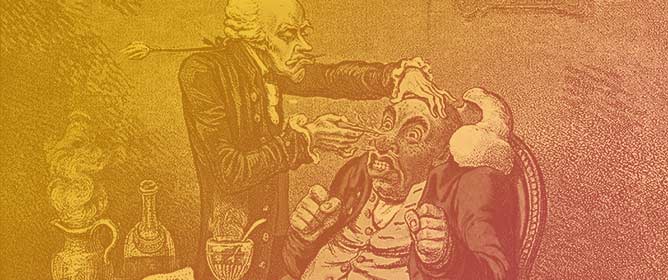 Disinformation by Proponents of Perkins’ Patent “Metallick Tractors” (1798–1806) to Sway Public Opinion in Britain in Favor of a Fraudulent Therapy
Disinformation by Proponents of Perkins’ Patent “Metallick Tractors” (1798–1806) to Sway Public Opinion in Britain in Favor of a Fraudulent Therapy
Journal Description
Histories
Histories
is an international, peer-reviewed, open access journal on inquiry of change and continuity of human societies (on various scales and with different approaches, including environmental, social and technological studies), published quarterly online by MDPI.
- Open Access— free for readers, with article processing charges (APC) paid by authors or their institutions.
- Rapid Publication: manuscripts are peer-reviewed and a first decision is provided to authors approximately 59.5 days after submission; acceptance to publication is undertaken in 9.6 days (median values for papers published in this journal in the second half of 2023).
- Recognition of Reviewers: APC discount vouchers, optional signed peer review, and reviewer names published annually in the journal.
Latest Articles
Cultural Contacts among Pre-Roman Peoples in Iron Age Italy: The Case of Venetic Inscriptions
Histories 2024, 4(2), 220-233; https://doi.org/10.3390/histories4020011 - 02 Apr 2024
Abstract
The spread of the alphabet in Italy occurred between the 7th and the 6th centuries BC, resulting in the appearance of texts written in so many different languages and in such limited territorial space that one can hardly observe another similar event (Venetic,
[...] Read more.
The spread of the alphabet in Italy occurred between the 7th and the 6th centuries BC, resulting in the appearance of texts written in so many different languages and in such limited territorial space that one can hardly observe another similar event (Venetic, Raetic, Etruscan, Picenian, Faliscan, Latin, Umbrian, Oscan, Greek, etc.). In this paper, we analyzed inscriptions produced by the Veneti, the ancient inhabitants of a region located between the Adriatic Sea and the Alps, which has provided mainly short sepulchral and votive texts. After a careful analysis, some so far poorly understood texts revealed the development of symbols to represent numbers and the measurement of time. These features are connected with the experience of the Etruscans and show characteristics shared with neighboring Celtic populations. The inscriptions also highlight a focus on the supernatural and the underworld. Cultural influences from the east, especially from Egypt, which represent a prominent moment in the evolution of Greece in the 7th century BC, have left traces in figurative culture and, quite unexpectedly, even in language. Rigorous transliterations and original interpretations of the analyzed inscriptions support the proposed results.
Full article
(This article belongs to the Section Cultural History)
Open AccessArticle
Curatorial Dissonance and Conflictual Aesthetics: Holocaust Memory and Public Humanities in Greek Historiography
by
Anastasia Christou
Histories 2024, 4(2), 204-219; https://doi.org/10.3390/histories4020010 - 26 Mar 2024
Abstract
►▼
Show Figures
Despite the increasingly diverse societal landscape in Greece for more than three decades within a context of migration, understandings of its fragile histories are still limited in shaping a sense of belonging that is open to ‘otherness’. While Greek communities have utilised history
[...] Read more.
Despite the increasingly diverse societal landscape in Greece for more than three decades within a context of migration, understandings of its fragile histories are still limited in shaping a sense of belonging that is open to ‘otherness’. While Greek communities have utilised history as a pathway to maintain identity, other parallel histories and understandings do not resonate with ‘Greekness’ for most, such as the case of Greek Jewry. Critical historical perspectives can benefit from tracing ‘re-membering’ as a feminist practice in the reassessment of societal values of inclusivity. Histories of violence and injustice can also include elements of ‘difficult histories’ and must be embraced to seek acknowledgement of these in promoting social change and cultural analysis for public humanities informing curation and curricula. Between eduscapes, art heritage spaces, an entry into contested and conflictual histories can expand a sense of belonging and the way we imagine our own connected histories with communities, place and nation. Greek Jews do not constitute a strong part of historical memory for Greeks in their past and present; in contrast to what is perceived as ‘official’ history, theirs is quite marginal. As a result, contemporary Greeks, from everyday life to academia, do not have a holistic understanding in relation to the identities of Jews in Greece, their culture or the Holocaust. Given the emergence of a new wave of artistic activism in recent years in response to the ever-increasing dominance of authoritarian neoliberalism, along with activist practices in the art field as undercurrents of resistance, in this intervention I bring together bodies of works to create a dialogic reflection with historical, artistic and feminist sources. In turn, the discussion then explores the spatiotemporal contestations of the historical geographies of Holocaust monuments in Greece. While interrogating historical amnesia, I endeavour to provide a space to engage with ‘difficult histories’ in their aesthetic context as a heritage of healing and social justice.
Full article
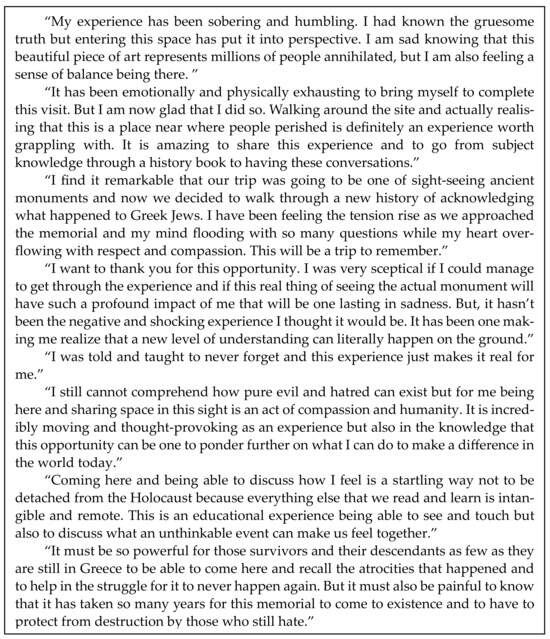
Figure 1
Open AccessArticle
Fantastic Flails and Where to Find Them: The Body of Evidence for the Existence of Flails in the Early and High Medieval Eras in Western, Central, and Southern Europe
by
Alistair F. Holdsworth
Histories 2024, 4(1), 144-203; https://doi.org/10.3390/histories4010009 - 07 Mar 2024
Abstract
Flails are one of the most contentious and misunderstood classes of medieval weaponry, despite their prevalence in popular media: some researchers question their existence entirely and the bulk of historians are skeptical of widespread temporal and geographical prevalence, while others, and a significant
[...] Read more.
Flails are one of the most contentious and misunderstood classes of medieval weaponry, despite their prevalence in popular media: some researchers question their existence entirely and the bulk of historians are skeptical of widespread temporal and geographical prevalence, while others, and a significant volume of period evidence, would argue the contrary. While the expansive use of flails in Eastern Europe and Byzantium is familiar, many Central, Western, and Southern European sources are less well known or largely forgotten, especially those stemming from the later-early and early high medieval eras (up to 1250). In this work, I collate and discuss the bulk of the available literary references and artistic depictions of flails and their use alongside some of the archaeological finds from Western, Central, and Southern Europe, with an emphasis on the 12th and 13th centuries. The significance of this volume of evidence is examined, and an assessment of flails as a part of medieval culture and warfare is considered. Collectively, this would suggest that knowledge of flails as instruments of war and associated cultural connotations, if not their actual prevalence and use in warfare, was far more widespread across Europe this time period than has been previously estimated.
Full article
(This article belongs to the Section Technological History)
►▼
Show Figures

Figure 1
Open AccessFeature PaperArticle
From Meditation to Techno-Mindfulness: On the Medicalization of Contemplative Practices and Future Prospects
by
Federico Divino
Histories 2024, 4(1), 125-143; https://doi.org/10.3390/histories4010008 - 29 Feb 2024
Abstract
This article explores the historical transformation of mindfulness, through a process of transculturation and commodification, into a biopolitical tool and analyzes possible future scenarios in which this tool will acquire even greater biopolitical strength through the integration of technological devices and artificial intelligence
[...] Read more.
This article explores the historical transformation of mindfulness, through a process of transculturation and commodification, into a biopolitical tool and analyzes possible future scenarios in which this tool will acquire even greater biopolitical strength through the integration of technological devices and artificial intelligence applications, particularly focusing on the growing divide between mindfulness-based therapies and traditional meditation. While both methodologies share the common objective of providing health and psychophysical benefits, they differ fundamentally in their theoretical frameworks, with mindfulness being egolatric and performance oriented while traditional meditation emphasizes transcending psychophysical identity. The development of mindfulness has been influenced by the sociocultural context of neoliberal and capitalist societies, resulting in a model that fosters self-regulation and emphasizes social control. The article also examines the potential biopolitical risks arising from the integration of AI-powered tools into mindfulness-based therapies. The increasing use of digital devices and applications for monitoring physical and mental health may contribute to a society characterized by constant self-surveillance and self-monitoring, reinforcing biopolitical control of the body. Consequently, this raises critical questions regarding the limits of surveillance and the potential exploitation of vulnerabilities through the incorporation of AI-powered tools.
Full article
(This article belongs to the Section Technological History)
Open AccessArticle
Urbanization, Bourgeois Culture, and the Institutionalization of the Frankfurt Neurological Institute by Ludwig Edinger (1855–1918)
by
Frank W. Stahnisch
Histories 2024, 4(1), 107-124; https://doi.org/10.3390/histories4010007 - 07 Feb 2024
Abstract
Ludwig Edinger (1855–1918) is often perceived as a functional neuroanatomist who primarily followed traditional lines of microscopic research. That he was a rather fascinating innovator in the history of neurology at the turn from the nineteenth to the twentieth century has, however, gone
[...] Read more.
Ludwig Edinger (1855–1918) is often perceived as a functional neuroanatomist who primarily followed traditional lines of microscopic research. That he was a rather fascinating innovator in the history of neurology at the turn from the nineteenth to the twentieth century has, however, gone quite unnoticed. Edinger’s career and his pronounced hopes for future investigative progress in neurological work mark an important shift, one away from traditional research styles connected to department-based approaches towards a multi-perspective and quite advanced form of interdisciplinary scientific work. Being conceptually influenced by the Austrian neuroanatomist Heinrich Obersteiner (1847–1922) and his foundation of the Neurological Institute in Vienna in 1882, Edinger established a multi-faceted brain research program. It was linked to an institutional setting of laboratory analysis and clinical research that paved the way for a new type of interdisciplinarity. After completion of his medical training, which brought him in working relationships with illustrious clinicians such as Friedrich von Recklinghausen (1810–1879) and Adolf Kussmaul (1822–1902), Edinger settled in 1883 as one of the first clinically working neurologists in the German city of Frankfurt/Main. Here, he began to collaborate with the neuropathologist Carl Weigert (1845–1904), who worked at the independent research institute of the Senckenbergische Anatomie. Since 1902, Edinger came to organize the anatomical collections and equipment for a new brain research laboratory in the recently constructed Senckenbergische Pathologie. It was later renamed the “Neurological Institute”, and became an early interdisciplinary working place for the study of the human nervous system in its comparative, morphological, experimental, and clinical dimensions. Even after Edinger’s death and under the austere circumstances of the Weimar Period, altogether three serviceable divisions continued with fruitful research activities in close alignment: the unit of comparative neurology, the unit of neuropsychology and neuropathology (headed by holist neurologist Kurt Goldstein, 1865–1965), and an associated unit of paleoneurology (chaired by Ludwig Edinger’s daughter Tilly, 1897–1967, who later became a pioneering neuropaleontologist at Harvard University). It was especially the close vicinity of the clinic that attracted Edinger’s attention and led him to conceive a successful model of neurological research, joining together different scientific perspectives in a unique and visibly modern form.
Full article
(This article belongs to the Section Technological History)
►▼
Show Figures
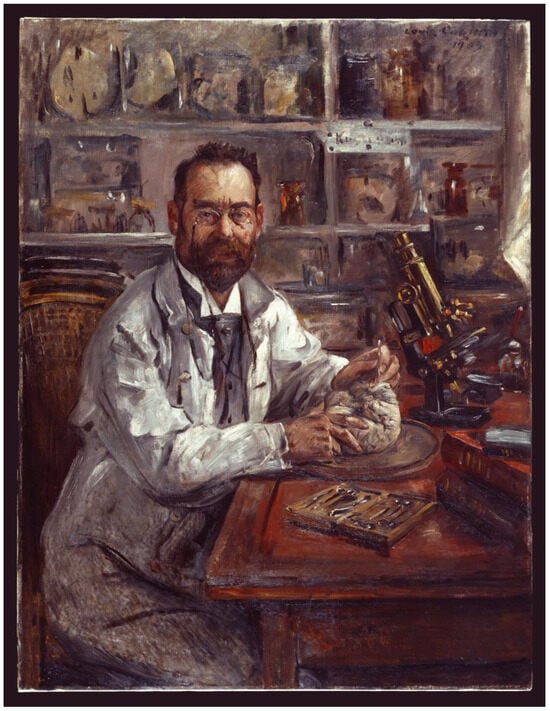
Figure 1
Open AccessFeature PaperArticle
Disinformation by Proponents of Perkins’ Patent “Metallick Tractors” (1798–1806) to Sway Public Opinion in Britain in Favor of a Fraudulent Therapy
by
Douglas J. Lanska
Histories 2024, 4(1), 66-106; https://doi.org/10.3390/histories4010006 - 30 Jan 2024
Abstract
►▼
Show Figures
In 1796, American physician Elisha Perkins patented “metallick Tractors” for the treatment of various ailments, particularly those associated with pain. They were subsequently rapidly and widely disseminated in the United States and Great Britain based on testimonials and deceptive marketing tactics. Dissemination was
[...] Read more.
In 1796, American physician Elisha Perkins patented “metallick Tractors” for the treatment of various ailments, particularly those associated with pain. They were subsequently rapidly and widely disseminated in the United States and Great Britain based on testimonials and deceptive marketing tactics. Dissemination was facilitated by endorsements from prominent physicians, politicians, and clergymen; quasi-theoretical, handwaving explanations of efficacy based on Galvani’s then-current experiments; and the procedure’s apparent safety and simplicity. However, blinded placebo-controlled trials in Great Britain using sham devices demonstrated that the therapy was ineffective. In response, in the period from 1798 to 1806, Perkinists unleashed a barrage of disinformation (ad hominem attacks, misleading arguments, unethical propaganda tactics, and poetic and graphic satire) to sway public opinion in favor of the fraudulent therapy and against its critics. The disinformation slowed the abandonment of “tractoration”, but higher-level scientific argumentation ultimately prevailed. The Perkinist disinformation campaign had antecedents with the Mesmerist disinformation campaign in the mid-1780s. Similar propaganda tactics are still widely employed to encourage the purchase and use of disproven or fraudulent therapies, as evidenced by propaganda from adherents of acupuncture in response to negative clinical trials and from supporters of unsafe and ineffective therapies promulgated during COVID-19.
Full article
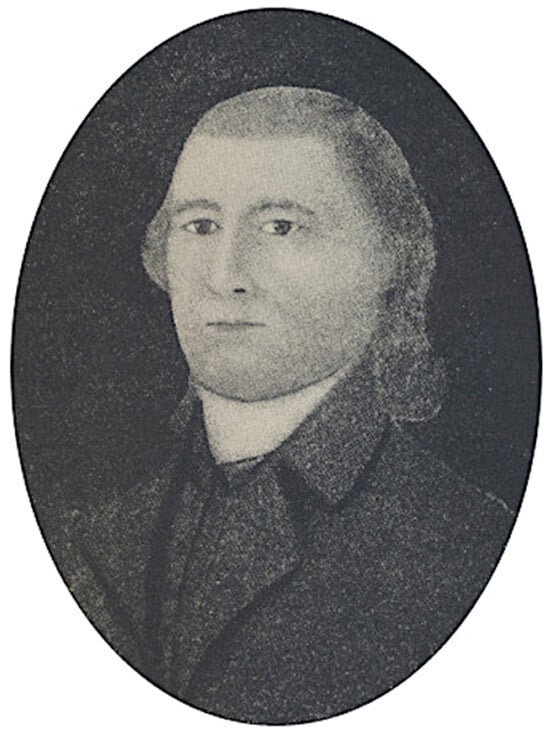
Figure 1
Open AccessEditorial
(New) Histories of Science, in and beyond Modern Europe: Introduction
by
Dania Achermann, Fabian Link, Volker Remmert and Cécile Stephanie Stehrenberger
Histories 2024, 4(1), 62-65; https://doi.org/10.3390/histories4010005 - 27 Jan 2024
Abstract
Over the past few decades, history of science has changed enormously and developed into a very dynamic and diversified field of historical research [...]
Full article
(This article belongs to the Special Issue (New) Histories of Science, in and beyond Modern Europe)
Open AccessArticle
Beyond Innovation and Use, or Why We Must Follow Technologies through Time
by
Heike Weber
Histories 2024, 4(1), 51-61; https://doi.org/10.3390/histories4010004 - 25 Jan 2024
Abstract
Synthesizing various studies that follow technology beyond innovation and use, this article aims to continue widening the scope of history of technology toward this perspective. It argues that we must follow technology through time and—in addition to its use—its maintenance and repair, while
[...] Read more.
Synthesizing various studies that follow technology beyond innovation and use, this article aims to continue widening the scope of history of technology toward this perspective. It argues that we must follow technology through time and—in addition to its use—its maintenance and repair, while also addressing its so-called afterlife, encompassing topics such as reuse, reconfiguration and/or restoration, decline or deliberate ruination, abandonment, and removal and/or remains. Recent studies of these issues underscore that the temporality of technology does not end with the end of its use, suggesting instead multilayered temporalities. History of technology is thus challenged to rethink some of its established and largely unquestioned approaches, such as the “innovation timeline”, the model of “technology diffusion and substitution”, and “lifecycle” metaphors borrowed from twentieth-century theories of economic growth and innovation.
Full article
(This article belongs to the Special Issue (New) Histories of Science, in and beyond Modern Europe)
Open AccessArticle
Hayek and Menger on Money
by
Christopher Adair-Toteff
Histories 2024, 4(1), 38-50; https://doi.org/10.3390/histories4010003 - 23 Jan 2024
Abstract
Friedrich von Hayek devoted much of his early scholarly writings to the concept of money. That is not that surprising given that he was a member of the Austrian School of Economics. The founder of the school, Carl Menger, had also devoted much
[...] Read more.
Friedrich von Hayek devoted much of his early scholarly writings to the concept of money. That is not that surprising given that he was a member of the Austrian School of Economics. The founder of the school, Carl Menger, had also devoted much of his academic life investigating the nature and function of “Geld” (“money”). What is surprising is that few scholars have investigated Hayek’s and Menger’s writings on money. This essay is intended to help rectify this gap by providing an account of Hayek’s and Menger’s conceptions of money.
Full article
Open AccessArticle
The Evolution of Warfare and Weapons in Japan, 792–1392
by
Sean O’Reilly
Histories 2024, 4(1), 24-37; https://doi.org/10.3390/histories4010002 - 16 Jan 2024
Abstract
The fearsome Japanese samurai, a legendary figure whose primary attribute was loyalty or honor, needs no introduction. He is strongly associated with the equally famous katana. The popular image of the samurai probably would appear wearing armor but certainly does not carry a
[...] Read more.
The fearsome Japanese samurai, a legendary figure whose primary attribute was loyalty or honor, needs no introduction. He is strongly associated with the equally famous katana. The popular image of the samurai probably would appear wearing armor but certainly does not carry a shield. This figure, many assume, must have dominated medieval Japan. Yet is this samurai image accurate? Can it withstand sustained scrutiny? What was Japanese warfare really like 1000 years ago? In this article, I evaluate the key sources on medieval warfare in Japan, identifying the contributions of each and pointing out some methodological problems they face. The most prominent casualty of this synthetic analysis is the pop culture image of the heroic and honorable sword-wielding samurai.
Full article
Open AccessArticle
Visualising the Modern Housewife: US Occupier Women and the Home in the Allied Occupation of Germany, 1945–1949
by
Christine de Matos
Histories 2024, 4(1), 1-23; https://doi.org/10.3390/histories4010001 - 03 Jan 2024
Abstract
Thousands of Allied women arrived in occupied Germany after the Second World War as the wives of military and civilian men working in the occupation apparatus. Yet rarely have these women been seen as active agents of occupier power and knowledge. One way
[...] Read more.
Thousands of Allied women arrived in occupied Germany after the Second World War as the wives of military and civilian men working in the occupation apparatus. Yet rarely have these women been seen as active agents of occupier power and knowledge. One way of understanding their role, or how it was imagined, is through images and textual representations. With a focus on the early years of occupation (1945–1949) and visual representations of US wives, this article examines the occupation household that was serviced by occupied domestic workers, in turn drawing comparisons to imperial contexts. Visual cues in selected photographs and caricatures suggest a presumed superior occupier modernity that was both performative and educative, mediated by a class-like asymmetrical relationship. These representations have been divided into three key themes: economic modernity, as through consumerism; domestic modernity in the home; and modern gender and family relations. Here, occupier women’s bodies were contrasted against the occupied to signify the power, prestige and modernity of her nation as an occupying power, in turn revealing both the shape of everyday power relations in the home and the paradoxical aims of the occupation itself.
Full article
(This article belongs to the Section Cultural History)
►▼
Show Figures
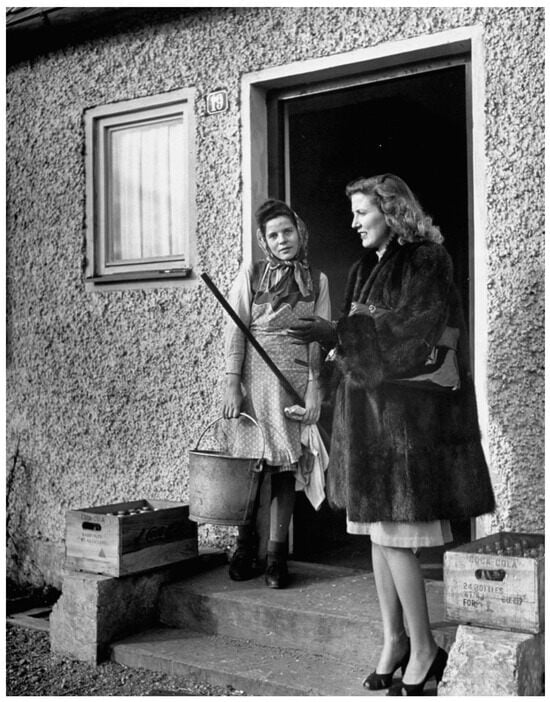
Figure 1
Open AccessArticle
Spinoza and Enlightened Pleasures
by
Charlie Huenemann
Histories 2023, 3(4), 371-380; https://doi.org/10.3390/histories3040025 - 05 Dec 2023
Abstract
Spinoza recognizes that worldly pleasures are not contrary to the life of the philosophical sage, but such pursuits must be carefully directed. He distinguishes between a joy that affects only some parts of the body (titillatio) and joy that extends through
[...] Read more.
Spinoza recognizes that worldly pleasures are not contrary to the life of the philosophical sage, but such pursuits must be carefully directed. He distinguishes between a joy that affects only some parts of the body (titillatio) and joy that extends through the body as a whole (hilaritas or “cheerfulness”). Titillation can be excessive, since it can blind us to our other needs. But cheerfulness cannot be excessive, since the whole body is improved at once. In his account of cheerfulness, Spinoza can be understood to be describing the life of a liefhebber, which is the Dutch term for a connoisseur, or an enlightened and discriminating consumer of worldly pleasures. It is a strikingly appropriate discussion given his own historical context, in which the Dutch culture found itself suddenly in possession of delights from around the world. This paper will explore Spinoza’s account of pleasure and cheerfulness in its context, with reference to other authors who were wrestling with the problem of finding the appropriate place for worldly pleasures in a culture of broadly Calvinist sympathies.
Full article
Open AccessArticle
Seamen’s Guilds, Labor Organizations and Social Protest in Northern Iberia in the Late Middle Ages
by
Jesús Ángel Solórzano-Telechea
Histories 2023, 3(4), 354-370; https://doi.org/10.3390/histories3040024 - 29 Nov 2023
Abstract
►▼
Show Figures
Craft guilds have been at the core of important historiographical debates on the economic, social and political history of medieval cities for twenty years. The aim of this article is to examine the seamen’s guilds in the town ports of the Northern Peninsula
[...] Read more.
Craft guilds have been at the core of important historiographical debates on the economic, social and political history of medieval cities for twenty years. The aim of this article is to examine the seamen’s guilds in the town ports of the Northern Peninsula in the Late Middle Ages. This study analyzes fundamental aspects of the social assistance, labor organization and social identity of the town ports, which were located on the maritime border of the Kingdom of Castile. In contrast to the more classic view of the craft guilds as protectionist institutions, which only served the interests of a privileged group of masters, this analysis highlights the contribution of the seamen’s craft guilds to the organization of labor at sea, the training of sea workers, the ability to negotiate with merchants and avoid labor exploitation, the provision of social assistance to the most vulnerable population, and the ability to lead the social protest for the guilders’ representation in the urban government. In summary, it is concluded that the seafarers’ guilds were constituted as networks of mutual help between individuals in the labor, welfare and political spheres of the population of the town ports of northern Iberia in the Late Middle Ages.
Full article
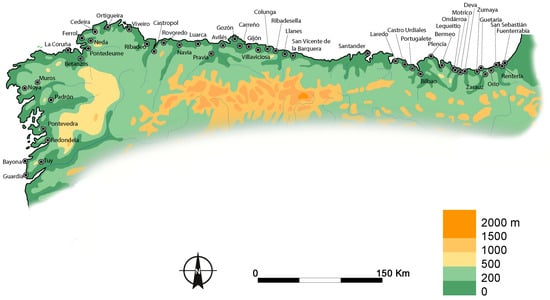
Figure 1
Open AccessEditorial
Images of Nature: Introduction to the Special Issue
by
Jon Mathieu
Histories 2023, 3(4), 348-353; https://doi.org/10.3390/histories3040023 - 18 Oct 2023
Abstract
This Special Issue on ‘Images of Nature’ in the longue durée has its origins in a historical conference on ‘Nature’ at the University of Geneva in the summer of 2022 (6th Swiss History Days, 29 June–1 July 2022) [...]
Full article
(This article belongs to the Special Issue Images of Nature—From the Middle Ages to (Non-)Western Modernities)
Open AccessArticle
Naturmenschen? Alexander von Humboldt and Indigenous People
by
Joachim Eibach
Histories 2023, 3(4), 331-347; https://doi.org/10.3390/histories3040022 - 18 Oct 2023
Cited by 1
Abstract
In the numerous texts he wrote about his grand voyage to the Americas (1799–1804), the Berlin-born, highly influential, independent scholar Alexander von Humboldt (1769–1859) considers the people in Spanish America time and time again. While Humboldt was trained as a botanist, geologist, and
[...] Read more.
In the numerous texts he wrote about his grand voyage to the Americas (1799–1804), the Berlin-born, highly influential, independent scholar Alexander von Humboldt (1769–1859) considers the people in Spanish America time and time again. While Humboldt was trained as a botanist, geologist, and mining engineer, he was nevertheless fascinated by indigenous actors who employed specific competencies as they operated in their natural environments and their own socio-cultural contexts, which were distinctly different from those in Europe. His perspectives on indigenous people are complex and refer back to various current discourses of his day. Although these texts address very different topics across a range of disciplines, they nevertheless clearly testify to his intense interest in Latin American society and culture. Humboldt repeatedly reconsiders his approaches to these topics; in a characteristically Humboldtian manner, he attempts to understand quite diverse phenomena by means of precise, on-site observation, comparison, and contextualization. In so doing, his argumentation oscillated between the poles established and defined by contemporary discourse, namely ‘savage’ and ‘barbarism’ on one side of the spectrum, and ‘civilization’ on the other.
Full article
(This article belongs to the Special Issue Images of Nature—From the Middle Ages to (Non-)Western Modernities)
Open AccessArticle
The Toynbee Affair at 100: The Birth of ‘World History’ and the Long Shadow of the Interwar Liberal Imaginaire
by
Arie M. Dubnov
Histories 2023, 3(4), 308-330; https://doi.org/10.3390/histories3040021 - 04 Oct 2023
Abstract
Functioning as “precedent” and “templates” for future transfers, the Greco-Turkish population exchange and the Lausanne Treaty) are undoubtedly events of world-historical significance. But they are also crucial in the genesis of the subfield of historical research we now call “World History”: they provided
[...] Read more.
Functioning as “precedent” and “templates” for future transfers, the Greco-Turkish population exchange and the Lausanne Treaty) are undoubtedly events of world-historical significance. But they are also crucial in the genesis of the subfield of historical research we now call “World History”: they provided the backdrop against which Arnold Joseph Toynbee (1889–1975) began sketching his magnum opus, A Study of History and developed the foundations of this subfield of history writing. This article revisits the so-called “Toynbee Affair” and places it in its intellectual and political contexts. First, it revisits the British classicist scholarship that provided the backdrop and initial inspiration for Toynbee as it shifted its gaze from ancient Rome to Greece, which was put forward as a better model for foreign and imperial policy. Next, it examines Toynbee’s wartime activities and shows that his attitudes towards the new states of Central Europe were based on principles that often stood in tension with his activities and views connected to the Middle East. During these years, Toynbee was an active participant in a discourse concerning the need to manage “mixed populations,” which moved to the forefront of a new form of internationalism, while also exposed to the writings of authors such as Oswald Spengler and Frederick J. Teggart, who pushed him to advance a new type of historiography. Third, the article looks at the uneven reception of Toynbee’s ideas after 1945, including his views on the US, the “Muslim civilization,” and his controversial views on Jews and the politics of the Middle East. The article concludes by arguing that his views, which rested on a deep suspicion of liminal hybridity or cultural mestizos, failed to transcend the basic logic of separation developed in Lausanne. Entirely on the contrary: Toynbee’s story offers us a case in which we can recognize the making of the interwar “cultural imaginaire” and “reinvention of differences,” which continues shaping our view of “the West’s” supposed borders to this day.
Full article
(This article belongs to the Section Historiography)
Open AccessArticle
Barcelona, Naples and Salonika: Ethnic and Civic Nationalism in Three Mediterranean Port Cities (1888–1915)
by
Daniele Conversi
Histories 2023, 3(3), 288-307; https://doi.org/10.3390/histories3030020 - 05 Sep 2023
Abstract
How far is port cities’ cosmopolitan inclination reflected in the type of nationalism prevailing in the surrounding area or region? How do these relationships change in different timeframes, one determined by nationalist modernization, the other by neoliberal globalization? This article attempts to respond
[...] Read more.
How far is port cities’ cosmopolitan inclination reflected in the type of nationalism prevailing in the surrounding area or region? How do these relationships change in different timeframes, one determined by nationalist modernization, the other by neoliberal globalization? This article attempts to respond to this question by looking at three Northern Mediterranean port cities (Barcelona, Naples, and Salonica) in two different time settings: the advent of the centralizing nation-state preceding WW1 and the advent of free-market deregulation policies adopted worldwide since the 1980s. It does so by adapting a new critical reading of Hans Kohn’s dichotomy on civic/ethnic nationalism—and extending it to the realm of culture in an age of deep global transformations.
Full article
(This article belongs to the Section Cultural History)
Open AccessArticle
The Singapore Stone: Documenting the Origins, Destruction, Journey and Legacy of an Undeciphered Stone Monolith
by
Kelvin Cahya Yap, Tony (Wenyao) Jiao and Francesco Perono Cacciafoco
Histories 2023, 3(3), 271-287; https://doi.org/10.3390/histories3030019 - 03 Sep 2023
Abstract
The Singapore Stone was a large monolith present at the mouth of the Singapore River, clad with a faded inscription that was a point of interest for local and foreign antiquarians and other enthusiasts, as no person—native or otherwise—could decipher the meaning of
[...] Read more.
The Singapore Stone was a large monolith present at the mouth of the Singapore River, clad with a faded inscription that was a point of interest for local and foreign antiquarians and other enthusiasts, as no person—native or otherwise—could decipher the meaning of its tongue. Tragically, the stone was blasted in 1848 by East India Company engineers as part of works to widen the mouth of the river. Only four fragments were saved; these were sent to Calcutta’s Asiatic Society of Bengal and later placed in the custody of the Indian Museum. Today, only one fragment remains, which was returned to Singapore in 1919 and at present is displayed in the National Museum of Singapore. Over the past century and a half, there has been great interest in the fate of the lost fragments and in the mysterious inscription that the fragments hold. There have been various attempts at deciphering the Stone, with a variety of suggested interpretations and languages. This research paper compiles and documents both the physical journey of the fragments and the various attempts at deciphering them, aiming to comprehensively detail the Stone’s origins and journey from its erection to its present residence while providing an analysis of the past attempts at decipherment and the future of this effort.
Full article
(This article belongs to the Section Cultural History)
►▼
Show Figures

Figure 1
Open AccessArticle
Unravelling the Mystery of the Singapore Stone: A Comparative Analysis with the Calcutta Stone and the Possible Kawi Connection
by
I-Shiang Lee and Francesco Perono Cacciafoco
Histories 2023, 3(3), 261-270; https://doi.org/10.3390/histories3030018 - 29 Aug 2023
Abstract
The Singapore Stone, discovered in 1819, was blown up in 1843 and remains an enigma today. Several studies have suggested the script to be Kawi, a Brahmic script used between the 8th and 16th centuries in Java and other parts of Southeast Asia.
[...] Read more.
The Singapore Stone, discovered in 1819, was blown up in 1843 and remains an enigma today. Several studies have suggested the script to be Kawi, a Brahmic script used between the 8th and 16th centuries in Java and other parts of Southeast Asia. The language remains unknown but is thought to be Old Javanese, Sanskrit, or Tamil. There is great historical value in finding out what the script says, and it is the aim of this project to offer deeper insight into this undeciphered inscription. In this paper, an in-depth comparison of the Singapore Stone with the Calcutta Stone (1041 CE), a prominent example of a Later Kawi inscription, is performed. Brief comparisons of the Singapore Stone with other inscriptions are also conducted. Numerous characters on the Singapore Stone are matched to those on the Calcutta Stone. However, the Singapore Stone appears to have a much lower frequency of diacritics and clusters. Such a phenomenon is anomalous and could have hindered decryption efforts thus far. Nonetheless, an identification and comparison of such character signs are attempted. Overall, the two inscriptions are shown to share many stylistic similarities, suggesting that the Singapore Stone could be dated to the Later Kawi period.
Full article
(This article belongs to the Section Cultural History)
►▼
Show Figures
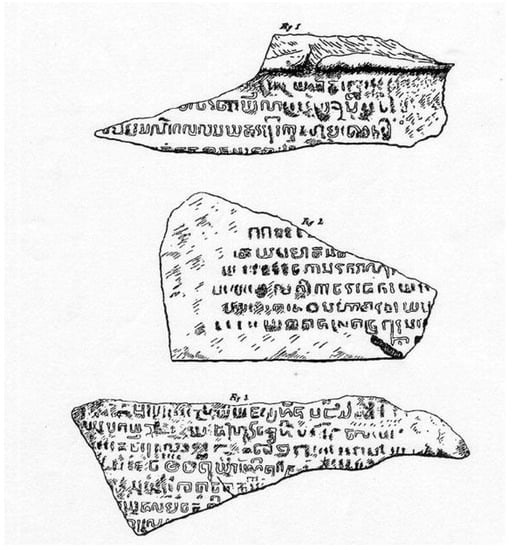
Figure 1
Open AccessArticle
Daniel Sennert’s Corpuscularian Reforms to Natural Philosophy
by
Gabriel Müller
Histories 2023, 3(3), 245-260; https://doi.org/10.3390/histories3030017 - 16 Aug 2023
Cited by 1
Abstract
Daniel Sennert (1572–1637), professor of medicine and natural philosophy in Wittenberg, defended a highly unusual philosophical system. This paper examines Sennert’s vision of natural philosophy within the context of the rapidly changing environment of the seventeenth century and relates his philosophical innovations to
[...] Read more.
Daniel Sennert (1572–1637), professor of medicine and natural philosophy in Wittenberg, defended a highly unusual philosophical system. This paper examines Sennert’s vision of natural philosophy within the context of the rapidly changing environment of the seventeenth century and relates his philosophical innovations to his methodology. The main result is that Sennert’s postulation of corpuscles with substantial forms, though it takes place within the framework of Aristotelian natural philosophy, directly influences his philosophical view of qualities.
Full article
(This article belongs to the Special Issue Images of Nature—From the Middle Ages to (Non-)Western Modernities)
Highly Accessed Articles
Latest Books
E-Mail Alert
News
Topics

Conferences
Special Issues
Special Issue in
Histories
History of International Relations
Guest Editor: André LiebichDeadline: 30 September 2024
Special Issue in
Histories
Revisiting the History of Twentieth-Century British Culture
Guest Editor: Matthew WorleyDeadline: 31 December 2024
Special Issue in
Histories
Novel Insights into Naval Warfare and Diplomacy in Medieval Europe
Guest Editor: Jesús Ángel Solórzano TelecheaDeadline: 28 February 2025




